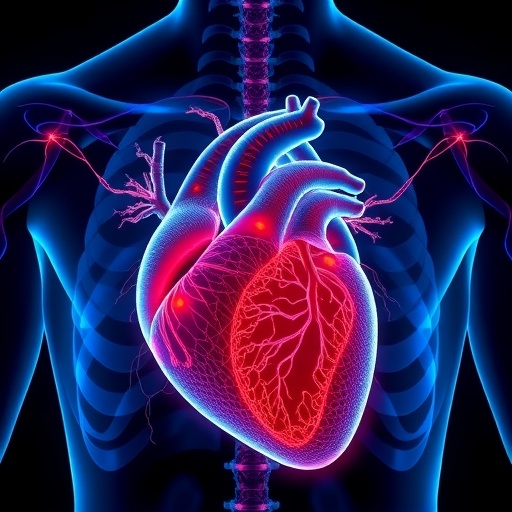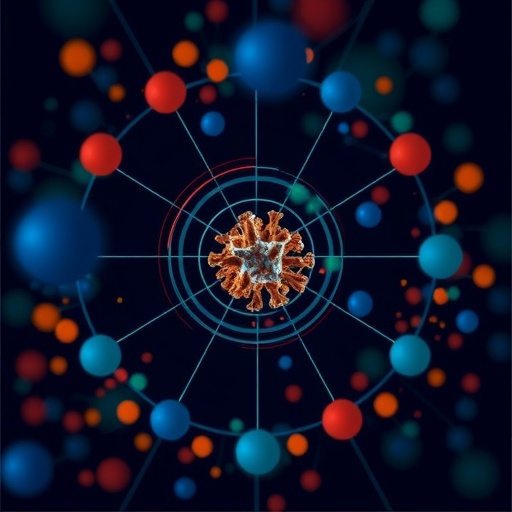A Groundbreaking Study Illuminates Iron Supplementation Dynamics in HIV-Suppressed Children in South Africa
In recent developments within pediatric HIV research, a pivotal study has emerged focusing on iron metabolism, absorption, and supplementation efficacy in children living with virally suppressed HIV. Conducted in South Africa through three prospective studies, this investigation provides crucial insights into how prebiotics might modulate iron absorption and loss, potentially revolutionizing nutritional interventions in immunocompromised pediatric populations.
Iron deficiency remains one of the most pervasive nutritional disorders worldwide, disproportionately affecting children in regions burdened by infectious diseases such as HIV. While antiretroviral therapies have successfully managed viral loads, the interplay between iron metabolism and HIV suppression remains underexplored, especially considering iron’s dualistic role in host immunity and pathogen growth. Addressing these complexities, the study spearheaded by Baumgartner and colleagues meticulously evaluated iron dynamics in children whose HIV infections were effectively suppressed.
Employing state-of-the-art isotopic techniques, researchers were able to precisely quantify iron absorption rates and systemic loss, providing an unprecedented resolution of iron kinetics in this unique demographic. This methodological advancement beyond conventional hematological markers allows for a nuanced understanding of iron homeostasis affected by chronic viral infection and therapeutic regimens.
One of the critical questions addressed was whether prebiotic supplementation, known for modulating gut microbiota and enhancing nutrient bioavailability, could augment iron uptake in these children. The gut microbiome’s role in regulating iron metabolism is increasingly recognized, with prebiotics posited to create a more favorable intestinal milieu for iron absorption through selective bacterial proliferation and metabolic byproducts.
Findings revealed that prebiotics paired with iron supplementation significantly enhanced iron absorption compared to iron supplementation alone. This enhancement was likely mediated by the prebiotic-induced improvements in gut barrier function and microbiome composition, which collectively reduce inflammation and oxidative stress, both known impediments to effective iron uptake.
Moreover, the study carefully documented iron loss parameters, highlighting that children with virally suppressed HIV exhibited distinctive profiles in systemic iron retention and mobilization. These profiles have critical implications for tailoring supplementation doses to circumvent iron overload risks while alleviating deficiency states.
Transitioning from the biological mechanisms to clinical applicability, this comprehensive investigation underscores the necessity of integrated approaches combining antiretroviral therapy with targeted nutritional strategies that include prebiotics. Such interventions promise to not only normalize iron status but also potentially improve overall health outcomes by reinforcing gastrointestinal integrity and immune competence.
Importantly, the safety profile of iron plus prebiotic supplementation was thoroughly assessed and found to be favorable, with no significant adverse effects reported over the study periods. This finding alleviates longstanding concerns regarding iron fortification in populations at risk for infections, where iron could inadvertently fuel pathogenic proliferation.
Furthermore, this work contributes to bridging gaps in global health policies by informing guidelines that recommend context-specific supplementation protocols for children living with HIV, particularly in sub-Saharan Africa, where the dual burden of HIV and micronutrient deficiencies is profound.
The prospective design of these studies, encompassing longitudinal assessments across diverse pediatric cohorts, bolsters the robustness of the conclusions. It also paves the way for future research integrating multi-omics analyses to delineate the mechanisms underlying iron metabolism’s alterations in chronic viral infection better.
From a broader perspective, the elucidation of how prebiotics impact iron absorption extends beyond HIV contexts, potentially affecting management strategies for other chronic diseases marked by inflammation and malabsorption syndromes. This interdisciplinary relevance elevates the significance of the study in the nutritional science and infectious disease research domains.
Taken together, the study by Baumgartner et al. sets a new benchmark in understanding iron supplementation dynamics amidst viral suppression, advocating for innovative, adjunctive nutritional therapies that can be seamlessly integrated into existing HIV care frameworks. As such, it represents a paradigm shift toward personalized nutrition that harmonizes with antiretroviral treatment, optimizing pediatric patient outcomes comprehensively.
In conclusion, these findings advocate for clinicians and policymakers to recalibrate iron supplementation protocols by considering the synergistic benefits of prebiotic co-administration, especially in resource-limited settings burdened by pediatric HIV. Future translational research should aim to fine-tune these interventions, explore mechanistic pathways in greater detail, and quantify long-term health impacts.
The research community awaits the replication and expansion of these findings through larger-scale trials, which could affirm the transformative potential of integrating microbiome-focused dietary additives into the standard care of children living with HIV globally.
Subject of Research: Iron absorption and loss dynamics, and the efficacy of iron supplementation with and without prebiotics in children with virally suppressed HIV.
Article Title: Iron absorption and loss, and efficacy of iron supplementation with and without prebiotics in children with virally suppressed HIV: three prospective studies in South Africa.
Article References: Baumgartner, J., Blaauw, R., Mikulic, N. et al. Iron absorption and loss, and efficacy of iron supplementation with and without prebiotics in children with virally suppressed HIV: three prospective studies in South Africa. Nat Commun 16, 9929 (2025). https://doi.org/10.1038/s41467-025-64998-4
Image Credits: AI Generated
DOI: https://doi.org/10.1038/s41467-025-64998-4
Tags: chronic viral infection and nutritioneffects of antiretroviral therapy on iron levelsHIV and iron metabolisminnovative methodologies in pediatric nutrition researchiron absorption in HIV-positive childreniron deficiency in children with HIViron homeostasis in immunocompromised patientsiron kinetics in HIV-suppressed childreniron supplementation dynamics in pediatric populationsnutritional interventions for immunocompromised childrenprebiotics and iron absorptionSouth Africa pediatric HIV research





